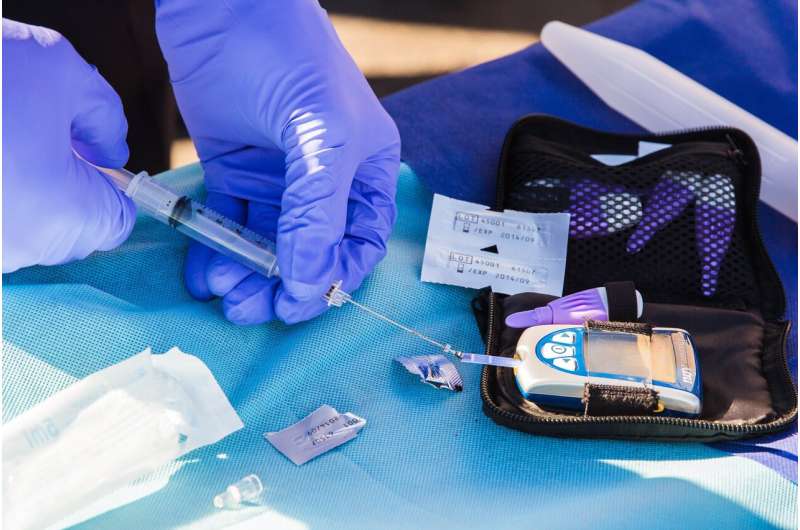Credit: Unsplash/CC0 Public Domain
Chronic inflammation is increasingly a focus of research. A recent study has now identified differences in indicators of inflammation between novel diabetes subgroups. But what does this mean for the future?
Symptoms that increase with age, such as cardiovascular disease, kidney damage or dementia, are common consequences of type 2 diabetes. In addition to metabolic disorders, chronic inflammatory reactions are important causes. The inflammatory cytokines typical for this can have numerous effects on various organs. One of the consequences of this is that the organs no longer respond adequately to insulin.
A new analysis of the German Diabetes Study (GDS) from the German Diabetes Centre (DDZ) investigated the differences between individual diabetes subgroups in the biomarkers of inflammation. Biomarkers are indicators that occur in the blood or in tissue and other parts of the body and are typical for certain changes in the body such as inflammation. In the current study, 74 biomarkers covering a broad spectrum of inflammatory processes were measured in over 400 test persons. The result: the novel diabetes subgroups show a number of specific differences that could allow a better determination of the risk for diabetes-related complications.
The German Diabetes Study (GDS) previously made it possible to identify five subgroups (clusters) of diabetes with different courses: severe autoimmune diabetes (SAID), severe insulin deficient diabetes (SIDD), severe insulin resistant diabetes (SIRD), moderate obesity-related diabetes (MOD) and moderate age-related diabetes (MARD). The current study shows that these subgroups differ not only in terms of age and metabolic characteristics, but also in terms of biomarkers of inflammation. Given the critical role of inflammatory processes in diabetes-related complications, these differences may also be related to the severity of clinical courses of diabetes. "It is interesting that this study of people with newly diagnosed diabetes reveals early disorders and can thus contribute to the early detection of diabetes consequences," said Professor Michael Roden, scientific director and board member of the DDZ. "As a result, these findings could enable early therapy in individual diabetes subgroups."
The highest biomarker blood levels were observed in the diabetes subgroup SIRD, which is characterized by pronounced insulin resistance. This underlines the importance of overweight/obesity, which is particularly related to inflammation and insulin resistance. On the other hand, the SIDD subgroup, which is mainly characterized by insulin deficiency, had the lowest biomarker levels. "This correlation between high levels of inflammatory markers and pronounced insulin resistance indicates a particular contribution of inflammatory processes in the SIRD subgroup," said Dr. Christian Herder, who heads the Inflammation working group at the DDZ. "It will take a few more years before we can derive a specific recommendation for diabetes therapy from these findings, but the results are extremely relevant for diabetes complications and their understanding. Future studies are needed to investigate to what extent differences in the profiles of inflammation-related biomarkers can explain the differences between the diabetes subgroups in terms of their risk of developing diabetes-related complications."
More information: Christian Herder et al, Differences in Biomarkers of Inflammation Between Novel Subgroups of Recent-Onset Diabetes, Diabetes (2021). DOI: 10.2337/db20-1054
Journal information: Diabetes
Provided by Deutsches Zentrum fuer Diabetesforschung DZD





















